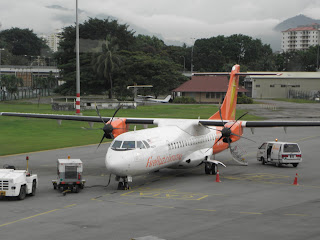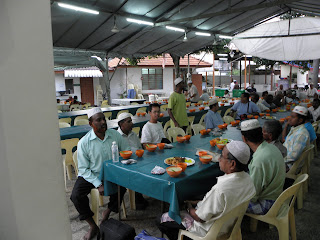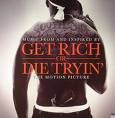
Gold is money because it is liquid and easily tradable, with a narrow spread between the prices to buy and sell. Also, gold is easily transportable, because it has a high value for its weight. This makes gold an excellent medium of exchange.
Gold is money because it is divisible, you can divide it into coins, or re-melt it into bars, without destroying it. Also, gold is fungible, where each unit of .999 fine gold (99.9% pure) is similar enough to another unit so as to be easily interchangeable. Gold is also nearly impossible to counterfeit, as genuine gold is easily recognizable. When measured by weight, gold is easily countable, and verifiable. These properties make gold an excellent unit of account.
Gold is money because it is a great store of value. Gold is not subject to decay, rot, or rust. Gold has an intrinsic value, because it is rare, highly coveted the world over, and is a luxury item. Gold has also become more and more important as an industrial metal especially for technology applications. Because of its rarity and its durability, gold has been almost universally acceptable as money for thousands of years. As an example, in ancient Rome for an ounce of gold you would be able to purchase a very fine toga, a hand crafted belt and a pair of sandals. Today that same ounce of gold would buy us a fine suit, a hand crafted belt and a pair of shoes. Comparatively the US dollar in recent years has lost about 40% of its purchasing power.
Gold remains the only world currency not open to debasement, competitive devaluation, or the excessive promises of overspent governments.
As an investment, gold typically is viewed as a financial asset that will maintain its value during times of political, social, or economic distress. As such, gold can provide individual and institutional investors alike with a portfolio safety net against sharp downward spikes in complementary assets such as stocks and bonds
A DIFFERENT CLASS OF ASSET:
Most investment portfolios are invested primarily in traditional financial assets such as stocks and bonds. The reason for holding diverse investments is to protect the portfolio against fluctuations in the value of any single asset class.
In building an investment portfolio, investors should avoid unnecessary risk through wise diversification. Diversification is the allocation of investable funds to a variety of investments. By diversifying, investors can reduce the risk that they would otherwise bear. Also, the risk reduction benefits of diversification can be achieved without reducing the overall return on your portfolio.
The Power of Diversification
The key to diversification is finding investments that are not closely correlated with one another. Other things being equal, the less the correlation between two investments, the better suited they are for effective diversification. This gives rise to a problem for most investors because most stocks are relatively closely correlated with one another and most bonds are relatively closely correlated with each other. In addition, there is also a close correlation between stocks and bonds. Investors need to find investments that are not closely correlated to stocks and bonds and include them as additional elements in their portfolios.
Diversification Reduces Risk
Many investors combine tangible assets with their stock and bond portfolios to reduce risk. This is due to the fact that tangible assets have historically had a very low, even negative, correlation with stocks and bonds. This means that they are useful to hold in conjunction with paper investments in order to reduce total risk. Not only is the risk reduced due to negative correlation between tangible and paper assets, but tangible assets have produced exceptional investment returns on their own. Every sign today points to increasing importance for diversification; that also means increasing importance for tangible assets.
I. GOLD – STORE OF VALUE
One major reason investors look to gold as an asset class is because it will always maintain an intrinsic value. Gold will not get lost in an accounting scandal or a market collapse. Economist Stephen Harmston of Bannock Consulting had this to say in a 1998 report for the World Gold Council,
“…although the gold price may fluctuate, over the very long run gold has consistently reverted to its historic purchasing power parity against other commodities and intermediate products. Historically, gold has proved to be an effective preserver of wealth. It has also proved to be a safe haven in times of economic and social instability. In a period of a long bull run in equities, with low inflation and relative stability in foreign exchange markets, it is tempting for investors to expect continual high rates of return on investments. It sometimes takes a period of falling stock prices and market turmoil to focus the mind on the fact that it may be important to invest part of one’s portfolio in an asset that will, at least, hold its value.”
Today is the scenario that the World Gold Council report was referring to in 1998.
II. GOLD - PORTFOLIO DIVERSIFIER
The most effective way to diversify your portfolio and protect the wealth created in the stock and financial markets is to invest in assets that are negatively correlated with those markets. Gold is the ideal diversifier for a stock portfolio, simply because it is among the most negatively correlated assets to stocks.
Diversification: The Key to Gold Investing
One of the most important aspects of investing is the control of risk in your portfolio, relative to the expected return. Tangible assets are an extremely useful tool for investors in that regard.
Portfolios that contain gold are generally more robust and better able to cope with market uncertainties than those that don’t.
Adding gold to a portfolio introduces an entirely different class of asset. Gold is unusual because it is both a commodity and a monetary asset. It is an ‘effective diversifier’ because its performance tends to move independently of other investments and key economic indicators.
Recent independent studies have shown that traditional diversifiers (such as bonds and alternative assets) often fail during times of market stress or instability. Even a small allocation of gold has been proven to significantly improve the consistency of portfolio performance during both stable and unstable financial periods.
There are six primary reasons why investors own gold:
1. As a hedge against inflation.
2. As a hedge against a declining dollar.
3. As a safe haven in times of geopolitical and financial market instability.
4. As a commodity, based on gold’s supply and demand fundamentals.
5. As a store of value.
6. As a portfolio diversifier.
III. HEDGE AGAINST INFLATION
Gold is renowned as a hedge against inflation. The most consistent factor determining the price of gold has been inflation - as inflation goes up, the price of gold goes up along with it. Since the end of World War II, the five years in which U.S. inflation was at its highest were 1946, 1974, 1975, 1979, and 1980. During those five years, the average real return on stocks, as measured by the Dow, was -12.33%; the average real return on gold was 130.4%.
Today, a number of factors are conspiring to create the perfect inflationary storm: extremely stimulative monetary policy, a major tax cut, a long term decline in the dollar, a spike in oil prices, a mammoth trade deficit, and America’s status as the world’s biggest debtor nation. Almost across the board, commodity prices up despite the short-term absence of a weakening dollar which is often viewed as the principal reason for stronger commodity prices.
Oil, Inflation and Gold
Although the prices of gold and oil don’t exactly mirror one another, there is no question that oil prices do affect gold prices. If oil prices rise or fall sharply, investors can expect a corresponding reaction in gold prices, often with a lag. There have been two major upward moves in the price of gold since it was freed to float in 1968. The first occurred between 1972 and 1974 when oil prices climbed 325%, from US$2.44 to US$10.36. During the same period, gold prices rose 268% (on a quarterly average basis) from US$47.45 to US$174.76. The second major price move occurred between 1978 and 1980, when oil prices increased 105%, from US$12.70 to US$26.00. Over the same period, quarterly average gold prices rose 254% from US$178.33 to US$631.40.
IV. GOLD - HEDGE AGAINST A DECLINING DOLLAR
Gold is bought and sold in U.S. dollars, so any decline in the value of the dollar causes the price of gold to rise. The U.S. dollar is the world’s reserve currency - the primary medium for international transactions, the principal store of value for savings, the currency in which the worth of commodities and equities are calculated, and the currency primarily held as reserves by the world’s central banks. However, now that it has been stripped of its gold backing international banks and Countries are reviewing there currency reserve options
V. GOLD AS A SAFE HAVEN
Despite the fact that the United States is the world’s only remaining superpower, there are a myriad of problems festering around the world, any one of which could erupt with little warning. Gold has often been called the “crisis commodity” because it tends to outperform other investments during periods of world tensions. The very same factors that cause other investments to suffer cause the price of gold to rise. A bad economy can sink poorly run banks. Bad banks can sink an entire economy. And, perhaps most importantly to the rest of the world, the integration of the global economy has made it possible for banking and economic failures to destabilise the world economyAs banking crises occur, the public begins to distrust paper assets and turns to gold for a safe haven.
When all else fails, governments rescue themselves with the printing press, making their currency worth less and gold worth more. Gold has always risen the most when confidence in government is at its lowest.
VI. GOLD - SUPPLY AND DEMAND
First, demand is out pacing supply across the board. Gold production is declining; Copper production is declining; the production of lead and other metals is declining. It is very difficult to open new mines when the whole process takes about seven years on average, making it hard to address the supply issue quickly. Gold output in South Africa, the world’s largest gold producer, fell to its lowest level since 1931 this past year as the rand’s gains prompted Harmony Gold Mining Co. and rivals to close mines despite 16 year highs in the gold price.
Growing Demand - China, India and Gold India is the largest gold-consuming nation in the world. China, on the other hand, has the fastest-growing economy in modern history. Both India and China are in the process of liberalizing laws relating to the import and sale of gold in ways that will facilitate gold purchases on a mammoth scale.
China is teaching the West something new. Its economy, growing at 9 percent per year, is expected to become the second largest in the world by 2020, behind only the United States. Last year Americans spent $162 billion more on Chinese goods than the Chinese spent on U.S. products. That gap has been growing by more than 25 percent per year. China’s consumer class, meanwhile, is spending on everything from bagels to Bentleys – and will soon outnumber the entire U.S. population. China’s explosive growth “could be the dominant event of this century,” says Stapleton Roy, former U.S. Ambassador to China. “Never before has a country risen as fast as China is doing.”































































